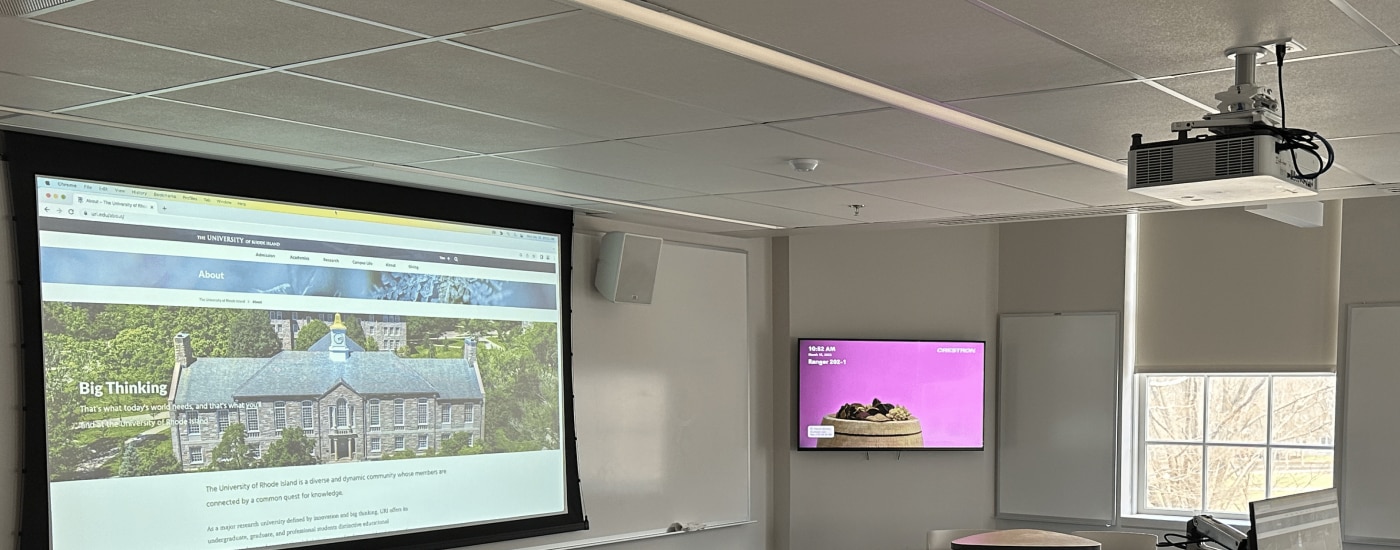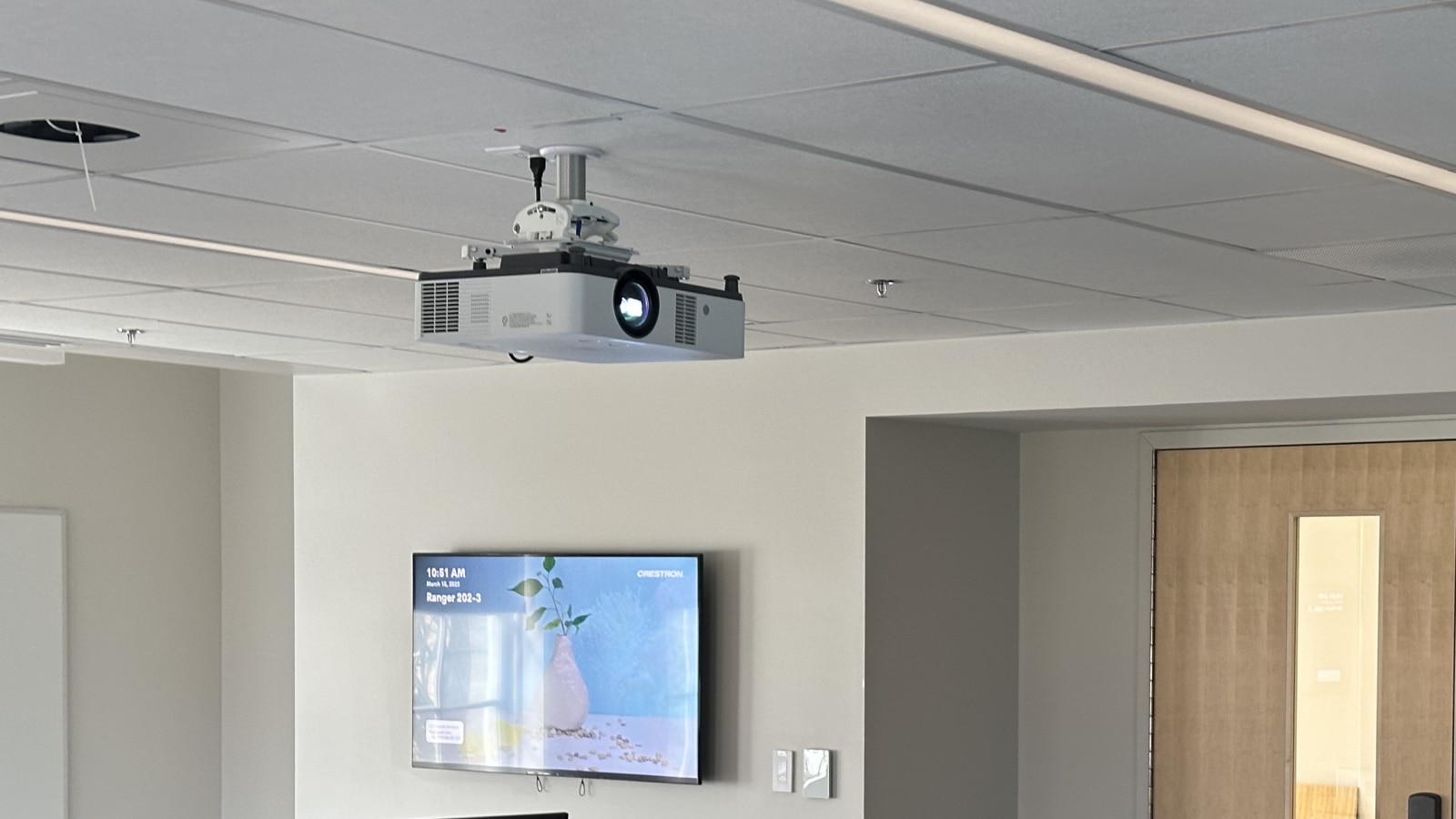
Laser projectors and BRAVIA displays help reduce maintenance costs and boost student engagement at University of Rhode Island
URI has transformed classrooms and conference rooms with Sony display technology.

- University needed new display solution to support hybrid teaching
- Required very high image quality plus minimalised maintenance

- Approximately 120 Sony laser projectors installed across campus
- BRAVIA 4K professional displays used for classroom teaching, hybrid meetings and digital signage

- Exceptional image quality is appreciated by students and staff
- Reliable operation, easy installation and minimal maintenance needs
- Less use of costly resources
When we saw the Sony displays, we were blown away by the image quality.
Jeffrey Levesque
Lead Information Technologist, University of Rhode Island
Enhancing teaching delivery and student engagement
The global Covid-19 pandemic has had a profound impact on many organisations. For the University of Rhode Island (URI) in the Northeastern US, it led to some major changes in the way teaching was delivered to its 18,000 undergraduate and graduate students.
“Everyone was realising that we needed displays and the ability to hold hybrid meetings” states Jeffrey Levesque, Lead Information Technologist at URI. Aside from the demands of the pandemic, URI also decided that new projectors were needed due to failures with their existing models that required frequent lamp replacements. The cost and inconvenience of these regular replacements prompted URI to switch up to lamp-free Sony laser projectors – a move that would generate a significant reduction in resource usage.
High brightness, easy installation
Levesque had first experienced Sony display technologies when they were demonstrated on the URI campus in 2018. Impressed with their quality and performance, the university began a programme to update its existing projectors to Sony models. Today, there are close to 120 Sony laser projectors in virtually every URI classroom. Starting with VPL-PHZ10 and VPL-PHZ12 installation models, the university’s use has expanded to include compact VPL-PHZ60 and VPL-PHZ61 models that respectively offer an impressive 6,500 and 7,000 centre lumens brightness. The Sony laser projectors also feature quick start-up and shutdown, saving time for busy lecturers and reducing energy costs.
“We tend to put the VPL-PHZ61 in now because the brightness is great” says Jeffrey. “If it’s too bright, I can decrease the brightness and make the projector’s light source last longer. I also like the size, because they’re light when I have to install them. It’s really easy to put them in. It takes me no time to put one of these up compared to other projectors I’ve worked with. And I don’t need assistance, because I can basically install them myself.”

BRAVIA displays reinforce classroom teaching and hybrid meetings
Complementing its fleet of Sony laser projectors, URI has also installed BRAVIA 4K professional displays across campus. Prior to the arrival of BRAVIA, there was no standard for displays on campus. With several different brands and models being used in different locations, it was difficult to keep track of which screens were being serviced at any time and how they operated.
“We’re a small department that kind of does everything on campus – and at this point we couldn’t keep it up anymore” explains Jeffrey. “When we saw the Sony displays, we were blown away by the image quality compared to what had been installed.”
The university now has over three dozen pro BRAVIA displays, ranging in screen size from 65 to 85 inches. The screens are primarily used for teaching reinforcement in classrooms, with selected spaces having a secondary display in the back of the room, as well as extended displays in the front. More BRAVIA displays are being installed to provide digital signage across campus, offering colourful information to students and visitors. Jeffrey is also advocating for them to be installed on campus for other uses, such as the school’s Memorial Union that’s in the process of swapping over to BRAVIA for its own digital signage needs. The university is also using BRAVIA displays to support hybrid meetings in its conference rooms.
Reliable operation and reduced maintenance
Jeffrey and other staff members have noted positive benefits since updating to Sony display technology, including savings in repair costs and time. “One thing we’ve noticed is when we put the Sony ecosystem on campus, it just works” notes Jeffrey. “We get them in, we put them up, and we really don’t have to think about them. I don’t have to visit the displays or projectors all the time and change their lamps or filters. They just work. We set the displays to power on and off using BRAVIA’s Pro Mode and they work great. I don’t get calls like I used to.”
URI students and teaching staff have also noticed some changes. Faculty members tell Jeffrey and the AV team how great the laser projectors’ image quality is, with Sony’s powerful Reality Creation feature making teaching content clearer and brighter to boost student engagement.
“Sony has been great when it comes to any issues that I have or even doing future design work” confirms Jeffrey: “We are incredibly happy here”.